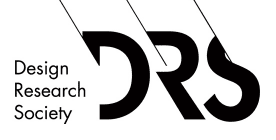contributions
Reflecting on How the Bridging Design Prototype Approach Could Contribute to the Concept of Autonomía
Gloria GOMEZ
Co-founder, design strategist, researcher, OceanBrowser Ltd.
Honorary senior lecturer, Save Sight Institute, University of Sydney
gloria@oceanbrowser.com
Presentation
Abstract
The Bridging Design Prototype (BDP) approach is a human-centred design method for small organisations. BDPs are fully functional rapid prototypes that user communities accept to incorporate in real activities; while designers use them for learning about the community, the context, and the practice. Experimentation should not require the presence of designers. By functional, it means that users must be able to implement them into real activities. But, BDPs are not necessarily minimum viable products, as the digital or tangible materials with which they are built could have a limited lifespan. Informed by autonomous design principles, this reflection involved a meta-analysis of a project carried out in a Netherlands school setting. My BDP for preschool concept mapping was re-oriented to explore if it could be used as didactic tool to enhance interactive language learning in the education of children with speech impairments. The analysis illustrated BDPs enabled speech therapists, teachers, and counsellors to achieve goals of community design of itself. The implementation of three pilots, with escalating numbers in participation and duration, led to the transformation of community participants and some practices. Explorations with BDP adaptations and a completely new design (i.e. an app for the interactive whiteboard developed by a teacher) transformed speech therapists and teachers into designers. This situation shifted the centre of a design process from the BDP designer to the user community.
bridging design prototypes; human-centred design; users as designers; autonomía and design
About the Author(s)
Dr Gloria Gomez is a cross-cultural multi-ethnic female designer of colour, co-founder of OceanBrowser Ltd., and an honorary senior lecturer at the University of Sydney. Gloria undertakes applied design research in educational practice with the Bridging Design Prototype approach. This approach produces rapid functional prototypes that users communities to experience the novel practice of preschool concept mapping, and OB3 – a web app for online academic study powered by her company. Her collaborative research partnerships include a framework to support inclusive design teaching and product evaluation, a 2 case study on how professionals with severe impairment use technology for work and study, and conceptualisations on resources for algebraic reasoning in early primary education. Gloria was born in Guatemala to Colombian parents, raised in Colombia and Ecuador, and graduated with a degree in Graphic Design from La Universidad Potificia Bolivariana in the late 90s. Her first professional job was as visual designer of the interactive game “La Ciudad Fantastica” developed by the award-winning Proyecto Ludomática. In 2009, she was conferred a PhD in Design from Swinburne University of Technology. Between 2001-2016, she held positions at the Florida Institute of Human and Machine Cognition, the University of Otago, and the University of Southern Denmark. For 20 years New Zealand has intermittently been her home, where she currently lives, work, and play.

